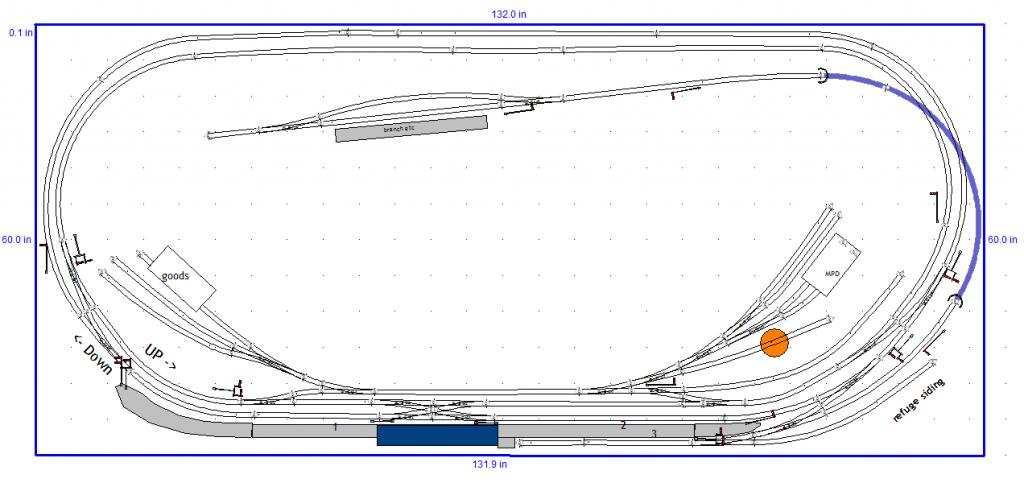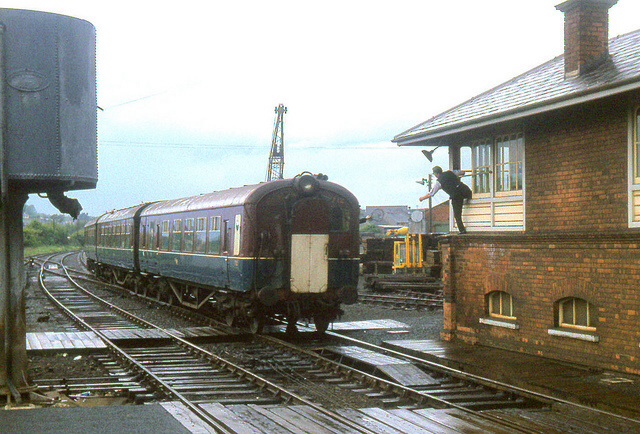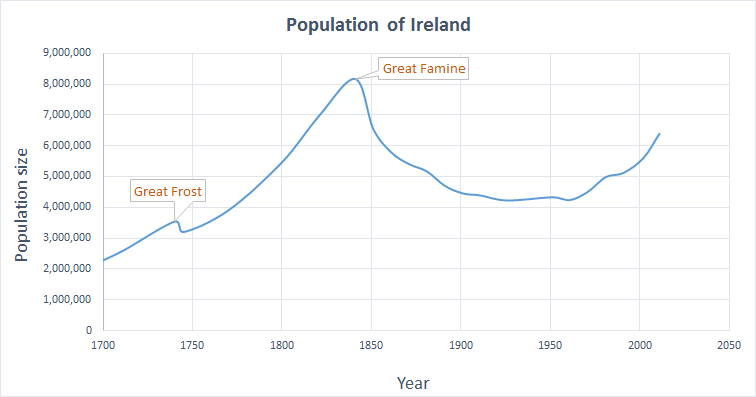
Junctionmad
Members-
Posts
1,136 -
Joined
-
Last visited
-
Days Won
1
Content Type
Profiles
Forums
Resource Library
Events
Gallery
Blogs
Store
Community Map
Everything posted by Junctionmad
-
I would humanly suggest that railway boundary " walls" were quite different from roadside ones. Roadside ones tended to be maintained and cut whilst railway ones didn't. Hence they were typically higher often much higher , denser and more disorganised. Large trees common enough in roadside " ditches " were uncommon in rail ones. Ditches between fields were equally quite different to railway boundary ditches
-
Of course only in Ireland do " ditches " rise up from the ground !!!!, most other places call them hedgerows Ask the northerners what a " sprong" is , that'll get em
-
That's much better , I would intersperse it with larger bushes and the area from the boundary to the track would rarely be plain grass, small trees, 8 foot high hawthorn and of course brambles galore, little maintenance was done As I said , as a young boy, I " burst " through many a hedge onto the ex-mallow line. While as you approach the commeraghs , stone gets more obvious , in the rolling fields of west Waterford and east cork , Tipperary etc. it's not a common feature My experience from the early 70s is a badly maintained concrete post fence with three stands of " bull wire " , completely overgrown by bushes, brambles, nettles and hawthorn. Often to 10-15 feet. With the ending of steam , there was much less need to cut back lineside foliage, and it quite rapidly got very extensive. I walked a lot of rail lines at the time around Waterford including the main line and the situation was the same. The railway was less concerned about trespass then it is today as well Don't forget the yellow flower furs ( ? ) bushes , ubiquitous , see that photo above. These would be everywhere Remember this is the golden vale, some of the most productive land in the country. Things grew like crazy. The more open, desolate look is far more characteristic of the west of Ireland. The other feature would be the railway cutting through small standing areas of trees often ash. These " infill " sites were often forgotten or perhaps owned by the railway and ignored. Trees are less common in the west Also, often old ballast long overgrown was dumped , as would be old rails , sleepers , and various misc rail bits in any clear area off track. Often the remnants of lifted branch lines, sidings etc. CIE looked very shoddy from the 70s to the 90s, one can see massive differences in general upkeep from pre-diesel eras , weeds , paper , etc ( maybe too much realism isn't a great idea !!! ) I'm amazed this is your first " scenic " layout. If I get anywhere close to your standard. I'll amaze myself. Perhaps you might provide a few detailed descriptions of what you do for ground cover. Forming cuttings , hills etc. I'm in awe By the way , the track ballast was overwhelming grey at the time, outside the heavy use areas ( stations , loco and goods depot) , the sleepers tended to weather to a light black, , often with quite a lot of white, rather like timber on a beach. Don't forget the " cess" on both sides of the track too, often in bad repair , the gangers were supposed to maintain its profile , but with declining staff often didn't . Large scale track replacement was not common , it was very much a make do and mend railway Also , many telephone lines by the early seventies had switched to roadside posts and the railway based ones were often only carrying a few lines and the posts were in bad repair. I think cie started ploughing under the ETS quite early on. My grandfather was a post office engineer responsible for maintaining cie ETS and phone lines ( was it the 80s when that ended ? ) I walked many a line with him. ( so remove and just leave one or two cross bars on the post , with a few half broken ! ) Ungated crossings , capable of taking a car would have been rare by the way, simple farm style gates were used even for animal accommodation crossings etc. of course someone will find a photo ? Remember irish railways , like the UK were " closed railways , theoretically fenced in and forbidden to the public. Very unlike rail in the USA Ps as I said I grew up alongside this line, thankfully today a little bit , still has some operational rail on it.
-
I see the whole project is being officially canned , pity , but expected
-
Contemplating another run from Gorey by motorised rail covered in lawn mower , I now notice that getting a return to bray and catching a Dart saves nearly a tenner on the total return fare. What madness is this. It's cheaper to disembark and switch , then stay in the same train ! And we let these people run a railway !
-
As yes Kilmac layout returns to me now. I boarded a few dolomite trains there over the years I remember the first of the trains scattering boys grown used to no trains along the river
-
A comment was made about the west of Ireland look of the layout and superb it is. However as was mentioned for a more west Waterford look dry stone walls would not be that common unless you got into the mountain foothills. The land is too good to have all those stones in it. Hedges were typically earthen with hawthorn etc. the railway boundary from memory was wire fencing long buried in bushes,small trees etc. I was very friendly with one of the plate layers , on the line. The little huts often made of sleepers should not be forgotten as there was typically one every few miles. As would a model of your typical plate layer , the long spanner over one shoulder and the special sledge over the other ! I was seven when it closed and had no recollection of hearing rail traffic. But I clearly remember it re-opening , with the sound of the two GM rattling through the night pulling the heavy dolomite trains. We used see the trains squealing through the tight S-curves at Mount Congreve and scattering the boys fishing from the several bridges close to the river The other trains were ballast trains from the quarry at carols cross. The line went through the middle of the quarry and I travelled to Waterford on several ballast specials I beleive Kilmac, was kept open as a block post ? I used to get lifts from the drivers I knew there to kilmeadan
-
Everyone mentions the magnesite trains. But I grew up within ½ mile of the line ,I walked it regularly and got lifts on the train as well, the dolomite hoppers were much more frequent ( from memory ) then the magnesite and double headed to boot Didn't the magnesite have to be exported ( from Tivoli ? )
-
I remember it well.
-
The main issue can be insulating the motor from the frames if any of the frame is live Had a relco some years ago never found it much use
-
how about something like this , you can add scenic areas like you viaduct etc the station layout allows both up and down trains to access both platforms 1 and 2 , and by reversing plat 3, the refuge siding allows a station pilot to release the engine on the branch train. the layout allows both up and down to switch running lines within station limits so as to allow through trains to run without disturbing the trains in at the platform.( well there are a few restrictions !) The bay platform is designed primarily as a shuttle to the halt/branch , but with some creative shunting a small goods train can access the branch line ( once it fits in the bay platform ) An added complexity would be to replace the crossovers at each end with either double cross overs on outside slips etc or scissors even, allowing completely symmetrical running through the station . ( thats an exercise for the reader !) goods trains access the yard by the loop and in certain cases some complex shunting ( but thats the point isn't it ) you can add scenic areas and viaducts etc to you hearts content there is no stock storage , but the layout is designed to be access and used from the centre of the baseboard as in reality abiyt 3 -3'6" of width of baseboard is all that you can reach over. Its designed using SCARM, with PECO geometry ( ugggh), with the exception of the scissors crossover, which has to be guntered out of four PECO points and a crossing, there are several examples on the web ( RMWeb etc) , showing how its done. ( make a bit of a talking point, too). average radius of the main curves is around 20" -22' , even if my ability with SCARM isn't great and they need a little tidying up!!! extra long trains can of course straddle plat 1 and 2 , ( race specials etc, spring show, or GAA finals !!! ) I knocked together the signalling in a few minutes so , it may not be perfect !!!!! some tweaking of the geometry would also ease a few curves etc
-
Alan does a fabulous job, and has been personally very helpful to me. I have subscribed today my self as I think his efforts should be supported
-
Actually, this is nonsense. The fact is that tolerance of work place deaths is the factor that has changed. In the 19th century , it was common for people to experience death and serious injury with little consequence for the company. Take sailing ships , it was common to loose crew on every ocean crossing , especially in winter . Today , this is not regarded as socially acceptable ( nor is it to send boys up chimneys etc ) hence we live in ( correctly in my view ) a zero accident culture, especially in the workplace. In order to achieve that , lots of safety measures, training and additional procedures have to be introduced as humans are essentially perpetually careless Sure, let's go back to the old days , as long as your not the one experiencing the workplace accidents of course !!!!:)
-
I'll sketch up something tomorrow
-
Just noticed the " curve " to the halt , has a radius of 1foot !! OP. You have too much track for the size. Why not rework the plan as a double track station on the southern straight side , with associated mpd, goods etc , you could still have a branch to a halt for added " complexity. " hence an interesting three or four bay station. in fact you could do an interesting , all platforms on one side of the double track which has several examples in Ireland , say plat 1and 2 on the long main line with two or more bay platforms for junctions work. That gives you and interesting scissors crossover to reach and exit both main platforms.
-
Didn't I hear that some s&t engineers had to come from Indian railways to advise on old semaphore signalling in Ireland ?
-
While you have got a lot of track into a given space , the layout has no equivalent or near equivalent prototype comparison , it's essentially a four track mainline with an unusual small mpd/goods. Some keys things. Lack of head shunt , perhaps you could indicate which lines are what running directions, ie up and down ( are you implementing left up running ) The ladder and crossover array , is rather " extensive " , as it designed to in essence facilitate bi-directional running which would be extremely unusual. Personally I can't see the point of the reverse loop. It not really consistent with turning locos for the station I would rationalise the ladder , and place a crossover on the " north " side of the station , if the track geometry allows it. By the way , the radius of the inner double track is 18-" or less, that a tight tight curve. Again,it's your railway , I merely present my observations
-
It's on its way to that
-
Most of it is a result of EU public tendering laws. It's not fur a reason the word bureaucratic is French. The tender has to be drawn up by an impartial person hence the consultant , to protect the company from charges of bias etc
-
The Official Irish 'Might Have Beens' Thread
Junctionmad replied to minister_for_hardship's topic in General Chat
a graph is always useful , I suspect the population would not have grown and the emigration in the 1900-> would have had the same net effect , the fall in population actually took well in excess of 50 years and was not all directly attributable to the famine -
Kildare to Connolly from late 2016.
Junctionmad replied to Broithe's topic in What's happening on the network?
Great pity it doesn't include hueston . I remember the old shuttle to DL pier -
Running or facing Ground disk shunt signal operation
Junctionmad replied to Junctionmad's question in Questions & Answers
Well in claremorris there are upwards of 5-6 facing disks depending on route setting and I no doubt think many complex single line stations would be similar. The irish practice of ignoring ground disks , seems to stem from early pre grouping uk practice and may have been carried across at independence. In later years post grouping in the uk , there is universal agreement that aside from a few unusual situations , facing discs would be cleared with main running signals to ensure drivers never passed a red light ( note this is all seperate to yellow discs ) I wonder what is the irish practice for colour light CTC. Controlled ground shunt signals , given the ease that they could be operated -
If IR could just run the lines they do have , I'd be happy. Never mind giving them more rail infrastructure !!
-
Looking for same , I think which was issued in 1967 Equally the earlier 1952 ( I think ) regulations on single and double track signalling is desired
.png.c363cdf5c3fb7955cd92a55eb6dbbae0.png)


